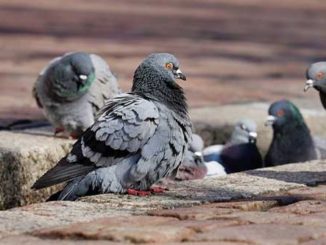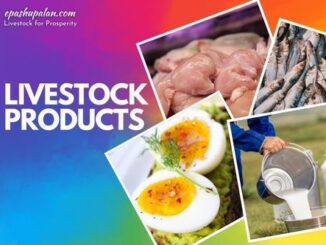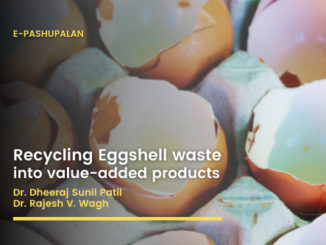In India, many types of poultry and livestock farming are in practice by the farmers. Poultry farming includes the farming of birds such as chickens, turkeys, ducks, geese, guinea fowl, pigeons, ostrich, emu, partridge, pheasant, etc. One of the famous poultry farming methods in India is chicken poultry for the purpose of meat and eggs. Besides chicken, duck also have the same features, but it does used as much as chicken. These are reasonably intellectual birds, and they can be simply skilled for their everyday routine, and it decreases the labor for supervision. They are pretty resilient birds and are unaffected to common avian diseases. In India, duck farming is an emerging and can be developed by many places by the farmers on their own interest. It desires lot of consciousness in people for its improvement in prospecting future. Duck farming is a very lucrative business. Ducks are highly valuable birds around the world, reared for egg and meat production.
Ducks occupy an important position next to chicken farming in India. They form about 10% of the total poultry population and contribute about 6- 7% of total eggs produced in the country. The duck, till recently, was practically reared only by the small and marginal farmers mostly in the Southern and Eastern coastal areas, North-eastern India and Jammu and Kashmir. People keep ducks for different reasons. Some keep ducks for breeding, others keep ducks for the meat or duck eggs, or both. Others may keep ducks to keep down the fly population on a farm that has livestock.

Advantages of duck farming
Duck farming is easy because of the following advantages when compared to the rearing of other species:
- Ducks require lesser attention and thrive well in scavenging conditions.
- Need less space for raising ducks.
- Highly resistant to common avian diseases
- Can eat all types of feed available.
- Ducks lay more egg per bird per year than chicken.
- The size of the duck egg is larger than hen egg by about 15 to 20 gms
- . • Have a longer profitable life. They lay well even in the second.
- Ducks are quite hardy, more easily brooded.
- Ducks lay 95 – 98% of their eggs in the morning before 9.00 AM.
Systems of Duck Rearing
There are many ways in which ducks can be reared. In practice farmers can adapt this rearing system to their own needs and the materials available.
Free range system: The ducks are only kept enclosed at night. During the day the ducks are free to roam outside in search of feed. They are brought inside at night by putting some extra feed in the shelter. The ducks only require night shelter and nests for laying eggs. Ducks will stay around the place, provided you treat them well. An advantage of this system is that the ducks go to the feed and harvest it themselves. This way, nutrients become available that the farmer cannot reach otherwise.
Confined system: The ducks are kept enclosed permanently, either in a covered shelter (indoor system) or with a run in the open. The ducks stay in the same place. It is easy to keep an eye on them and check them. An outside run makes it easier to give the ducks access to water, as a pond can be put in the open run area.
Indoor system: The indoor system is for large-scale duck farms, where the production is mechanized to reduce labor costs. The system requires more investment than the other two systems of housing. Farmer has to provide all feed and water and clean it regularly. If properly managed, growth can be fast and production cheap. Provide a large shallow container with water so that ducks can wash 3 and bathe. Like open drinkers they should be located over a drained area covered with wire or slatted floor.
Integrated Duck Rearing Systems: Duck keeping combines well with other forms of farming. In these systems the different forms of production complement each other, and the farmer will have better production and more profit. Waste and by-products are used. It covers two well-known integrated systems.
Duck keeping combined with paddy cultivation: In paddy fields ducks eat harmful insects and snails, this is a help for the paddy and at the same time the ducks get nutritious feed. For example, if the rice yield is low there is still a yield of eggs and duck meat. Migratory duck farming is a method of duck farming practiced by the poor agricultural laborers in South India. Farmer starts duck farming during December by rearing ducklings. Ducklings were obtained from large farmers. By February as the harvest of second crop of paddy is over the laborers starts migration with the ducks. The paddy cultivators of Tamil Nadu and Kerala generally welcomes the ducks. The ducks feed on left away paddy grains on the field as well as snails and small fishes. Water stirring caused by the duck’s activities inhibit the growth of weeds through photosynthesis reduction when the water becomes turbid. Their activities also enhance the rice root, stalk and leaf development, thereby accelerating rice growth. In addition, a reduced application of pesticides and fertilizers benefits the ecological system. During night the ducks are stays on the fields. One or two hours after sunrise, the ducks are released, by which time egg lying is almost completed and eggs can easily be collected. Owners of the land are given duck eggs as remuneration. The ducks grow well by feeding on paddy fields and the fields in turn become fertile by duck castings.
Duck keeping combined with fishponds: The waste from the duck shed can be recycled and may be used for fish culture in integrated duck-fish farming. This increases the production of natural food in the ponds, which in turn enhances the fish production. By integrating the duck and fish culture, more returns can be achieved. This gives the good benefits to the farmers. If the ducks are allowed to swim freely in the fishponds, the waste can be dispersed uniformly in the ponds, and it can also be used as a good fertilizer. Because of these, expenses for fertilizer, feed, supplementary feed for fish is minimized. Since the ducks are in the fishponds, it prevents the growth of the aquatic weeds and increases the biological productivity of the ponds. Because of the swimming action of the ducks, the amount of oxygen in the ponds gets increased. Ducks eat the weeds, insects, larvae, worms etc. present in the pond, and hence there is no need to add more additional feed to them. In duck – cum fish culture, fishes with 10 cm length only to be stocked because fishes less than this length may be eaten by the ducks. Fish seeds can be stoked at the rate of 10000 numbers/ha. Depending upon the nature of the fishpond and the availability of fish seeds the stocking density may vary. Rising of ducks depends upon the type of the species and egg laying capacity. To get more meat and egg from the duck-fish culture, proper management plays a vital role. The shed should be well ventilated and stagnant of waste water should be prevented. For fertilizing 1 ha pond, 200 ducks are sufficient. Ducks get their natural food from the pond itself. The domestic waste, rice bran, broken rice and pulses are more than enough for them. Duck, fish along with paddy cultivation: In the same field where paddy is being cultivated duck and fish can be reared together.
Conclusion
Duck growing is a beneficial livestock industry in the world because of its egg, meat and feather. Similar to chicken, ducks are also raised for eggs and meat. They have more profitable and prolific life because they lay eggs during second and third year also. Hence it will decrease the nourish cost. In general, ducks have the habit of laying eggs in the morning time since it is very easy to collect those eggs and have no fear about the missing of the eggs. Duck farming is having interdependent association with paddy cultivation, so paddy cultivation and ducks can be combined in the whole paddy agriculture extent. These are reasonably intellectual birds, and they can be simply skilled for their everyday routine, and it decreases the labor for supervision. They are pretty resilient birds and can be definitely agonized and are unaffected to common avian diseases.







Be the first to comment